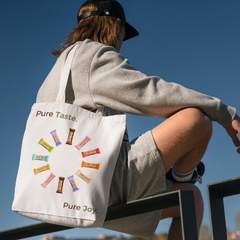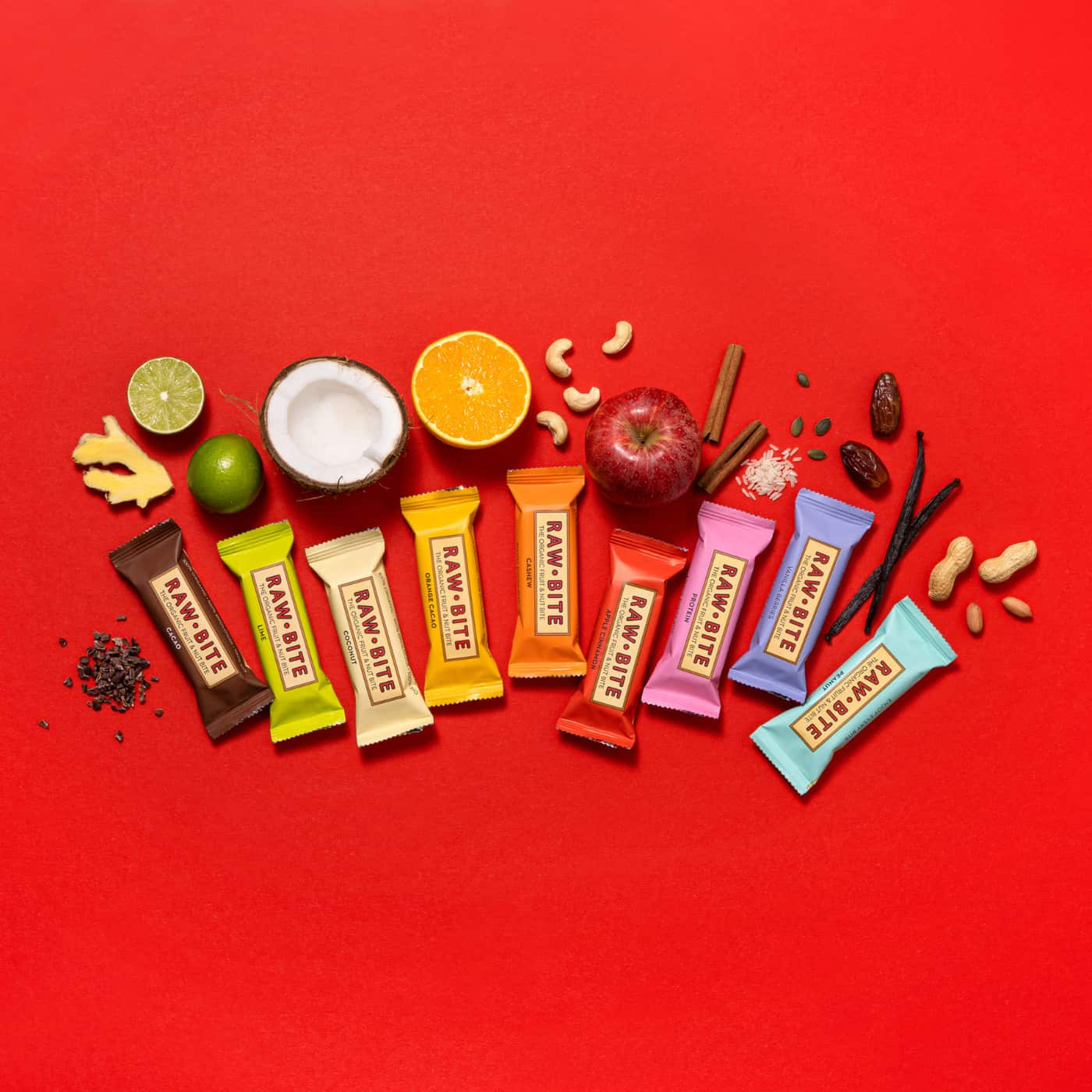What is sugar and how is it produced?
We’re going to skip all the complex biological and chemical facts; suffice it say that sugar is the general term for all mono- and disaccharides. You may have heard the word saccharose before: this is a disaccharide that consists of a fructose molecule (also known as fruit sugar) and a glucose molecule (also known as dextrose), forming a simple carbohydrate (1).
Conventional table sugar is obtained from sugar cane or sugar beets, which both contain a high concentration of sucrose (1). However, many other foods, such as nuts or fruits, also contain sugar (2).
What types of sugar are there?
Sugar is produced by extracting liquid from sugar beets or sugar cane. The different refining processes, crystallization forms, drying methods or molasses content yield different types of sugar. Molasses is a by-product of the manufacturing process and, with its thick, brownish mass, resembles sugar beet syrup (3).
The amount of molasses determines the colour of the sugar and is also responsible for slight flavour changes. Have you ever noticed that brown sugar has a slight caramel taste? (3) That’s the molasses.
Probably the most commonly known and used sugar in any food or beverage is refined sugar, which is produced by processing sugar beets in a factory. The plants are boiled down to form a juice, which is swirled around and evaporated until the sweet crystals form (4). Sugar cane, on the other hand, is processed in two facilities, a cane sugar factory and a sugar refinery (4). Depending on the degree of refining, the result is either whole cane sugar (unrefined sugar), raw cane sugar (refined once), or cane sugar (refined until there is no molasses left) (5).
In other words, brown sugar is conventional sugar but with some remaining molasses. As a result, it contains slightly more calcium and magnesium (6,7) and has a faintly caramelized flavour (3).
You’ve probably heard of other types of sugar, like agave syrup, coconut sugar or maple syrup. As the names indicate, these sugars are extracted from agave cactuses, coconut blossoms or maple trees.(8) These sugars are often used by the food industry to avoid a high content of refined sugar.
BTW: artificial sweeteners appear in the list of ingredients as an E number. Artificial sweeteners approved for use in the EU include aspartame (E 951), saccharine (E 954) or xylitol (E 967) (9). The next time you open your cupboard or go shopping, take a look at the list of ingredients and see which ones you can spot.
The coconut sugar hype
Coconut sugar is made in a two-stage process. First, the sap of the buds of the coconut palm is extracted; this is then heated until the liquid has evaporated, leaving brownish granules (10).
This alternative to refined sugar contains more minerals, antioxidants and fibre. But bear in mind that coconut sugar is high in calories and not as rich in nutrients as it is sometimes made out to be; it should be consumed in moderation (10).
A long, hard look at agave syrup
Another popular alternative to refined sugar is agave syrup. Like the name says, this syrup is extracted from the agave cactus. The juice of the cactus is heated and/or treated with enzymes to yield fructose. This means that, unlike industrial white sugar, agave syrup contains hardly any glucose. While this may sound like a good thing, it can cause health problems: the very high fructose content can damage the liver, which is the only organ that can process fructose. When the liver has too much fructose to process, it starts to turn it into fat, which can be detrimental to your liver and your overall health (11).
Incidentally, due to low concentration and the interaction with dietary fibre, the body doesn’t have a problem processing fructose from fruits (11).
The effect of too much sugar on your health
You’ve probably heard that you shouldn’t eat too much sugar. But why is that?
Well, first of all, sugar consists almost exclusively of carbohydrates, and contains almost no micronutrients (10). Some foods and drinks contain a large amount of sugar that you may not be aware of. Sugar has a lot of calories, meaning that eating too much of it can make you put on weight, and could even lead to obesity. Sugar also causes your blood sugar and insulin levels to rise quickly, which increases your risk of developing diabetes (11). Too much sugar is harmful to your teeth and can cause tooth decay (11).
However, that being said, you should distinguish between added refined sugar and naturally occurring sugar. The latter occurs in food and is mainly fructose, which causes a different physiological reaction.
Low-sugar, sugar-free, no added sugar – what’s the difference?
Legally, manufacturers are required to provide details of the sugar content in the product’s list of ingredients. For instance, the European Commission stipulates that a product can only be described as “low sugar” if it contains less than 5g of sugar per 100g (2.5g per 100ml for liquids). “Sugar-free” means that a product contains no more than 0.5g of sugar per 100g or 100ml.
If you see “No added sugars“ on a product, this means that no mono- or disaccharides or other sweeteners have been added. The words “Contains naturally occurring sugars" indicate that there is sugar in the product, but that it is natural sugar, e.g. fructose (12).
Did you know that we can label our delicious RAWBITE bars “No added sugar” and “Contains naturally occurring sugar”? Our bars are sweetened only by the dried fruits they contain, such as yummy dates.
So how can I reduce the amount of sugar I consume?
If you want to reduce your sugar intake we’ve got a couple of good tips for you:
- Avoid sweetened drinks. Fruit juice often contains added sugar, so it’s always best to go straight for the fruit. You can make your own iced tea by brewing your favourite tea and leaving it to cool.
- Make your own salad dressing with oil and vinegar instead of using shop-bought dressings which usually contain sugar.
- For breakfast, instead of muesli reach for oat flakes and nuts – or mix your own individual muesli.
- Ask your friends to join you – it’s always more fun to do things together!
- Read the ingredients list: it’s not just the obvious suspects – like chocolate or cookies and cakes – that contain sugar: many, many products contain hidden sugar.
- Satisfy your cravings with natural sugar – like our tasty RAWBITE bars.
Pure Taste. Pure Joy.
Sources:
- https://www.britannica.com/science/sugar-chemical-compound/Molasses-processing#ref50474
- https://www.sugar.org/sugar/sugars/
- https://www.sugar.org/wp-content/uploads/Sweeteners-in-Food_2.pdf
- https://eur-lex.europa.eu/legal-content/EN/TXT/PDF/?uri=CELEX:02011R1129-20131121&from=EN
- https://www.healthline.com/nutrition/too-much-sugar#TOC_TITLE_HDR_7
- https://ec.europa.eu/food/safety/labelling_nutrition/claims/nutrition_claims_en








